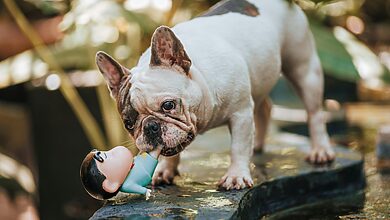DIY Rabbit Cage: Creating a Safe and Comfortable Habitat

Rabbits, being naturally active and social animals, require a well-constructed and secure living space that accommodates their specific needs. Building a DIY rabbit cage not only allows for customization but also ensures a safe and comfortable environment that promotes their physical and mental well-being.
Selecting the Right Materials and Planning the Design
1. Understanding Material Considerations for Rabbit Safety
When choosing materials, prioritize rabbit-safe options, considering factors such as non-toxicity, durability, and ease of maintenance. Explore the benefits and limitations of various materials like wood, wire mesh, and PVC, ensuring they meet the specific requirements for a secure and comfortable habitat.
2. Comprehensive Design Planning for Optimal Space Utilization
Prioritize meticulous design planning to ensure optimal utilization of the available space within the rabbit cage. Consider the essential needs of rabbits, including space for movement, resting areas, and designated feeding zones. Create a detailed blueprint that integrates safety features and accessibility for easy cleaning and maintenance.
Cutting, Sizing, and Assembling the DIY Rabbit Cage
1. Precision Techniques for Accurate Material Cutting
Adopt precision cutting techniques to ensure accurate and smooth edges, minimizing the risk of potential injuries to your rabbits. Utilize appropriate tools such as saws and wire cutters, emphasizing precise measurements and clean finishes to create a secure and rabbit-friendly environment.
2. Methodical Assembly Procedures for Structural Stability
Follow a systematic approach for assembling the DIY rabbit cage, prioritizing structural integrity and stability. Utilize sturdy fasteners and connectors to secure all components firmly, ensuring that the cage can withstand the rabbits’ activities and movements without compromising their safety or the cage’s durability.
Adding Features for Enrichment and Comfort
1. Implementing Enrichment Elements for Mental Stimulation
Incorporate various enrichment features such as tunnels, platforms, and interactive toys to promote mental stimulation and physical activity. Design these elements to encourage exploration and play, providing opportunities for the rabbits to engage in natural behaviors that contribute to their overall well-being.
2. Ensuring Comfortable and Accessible Living Spaces
Create comfortable and accessible living spaces within the rabbit cage by integrating cozy hiding spots, resting platforms, and easily reachable feeding areas. Ensure that these elements are designed to accommodate the specific needs and preferences of your rabbits, fostering a sense of security and well-being.
Decorating and Personalizing the DIY Rabbit Cage
1. Incorporating Safe and Engaging Decorative Elements
Introduce safe and engaging decorative elements that cater to the rabbits’ natural instincts and behaviors. Include chew toys, foraging opportunities, and natural materials that encourage physical and mental stimulation, promoting a stimulating and interactive environment within the cage.
2. Creating a Stimulating and Aesthetically Pleasing Environment
Personalize the rabbit cage by adding aesthetic enhancements such as non-toxic paints or stains, creating a visually appealing and engaging living space for the rabbits. Consider incorporating design elements that reflect your rabbits’ preferences and your own artistic sensibilities, adding a personalized touch to their habitat.
Maintaining and Cleaning the DIY Rabbit Cage
1. Implementing Effective Cleaning and Maintenance Practices
Establish a regular cleaning and maintenance routine that includes spot cleaning and deep cleaning to ensure a hygienic living environment for your rabbits. Use safe and rabbit-friendly cleaning agents to eliminate odors and prevent the buildup of bacteria, maintaining a clean and healthy habitat.
2. Conducting Regular Inspections for Safety and Structural Integrity
Perform routine inspections to identify any signs of wear and tear or potential hazards within the rabbit cage. Address any loose or damaged components promptly, ensuring that the cage remains structurally sound and free from any safety risks that could jeopardize the well-being of your rabbits.
By following these comprehensive guidelines and incorporating thoughtful design elements, you can create a DIY rabbit cage that not only meets the specific needs of your rabbits but also provides a secure, stimulating, and comfortable habitat that supports their overall health and happiness.








